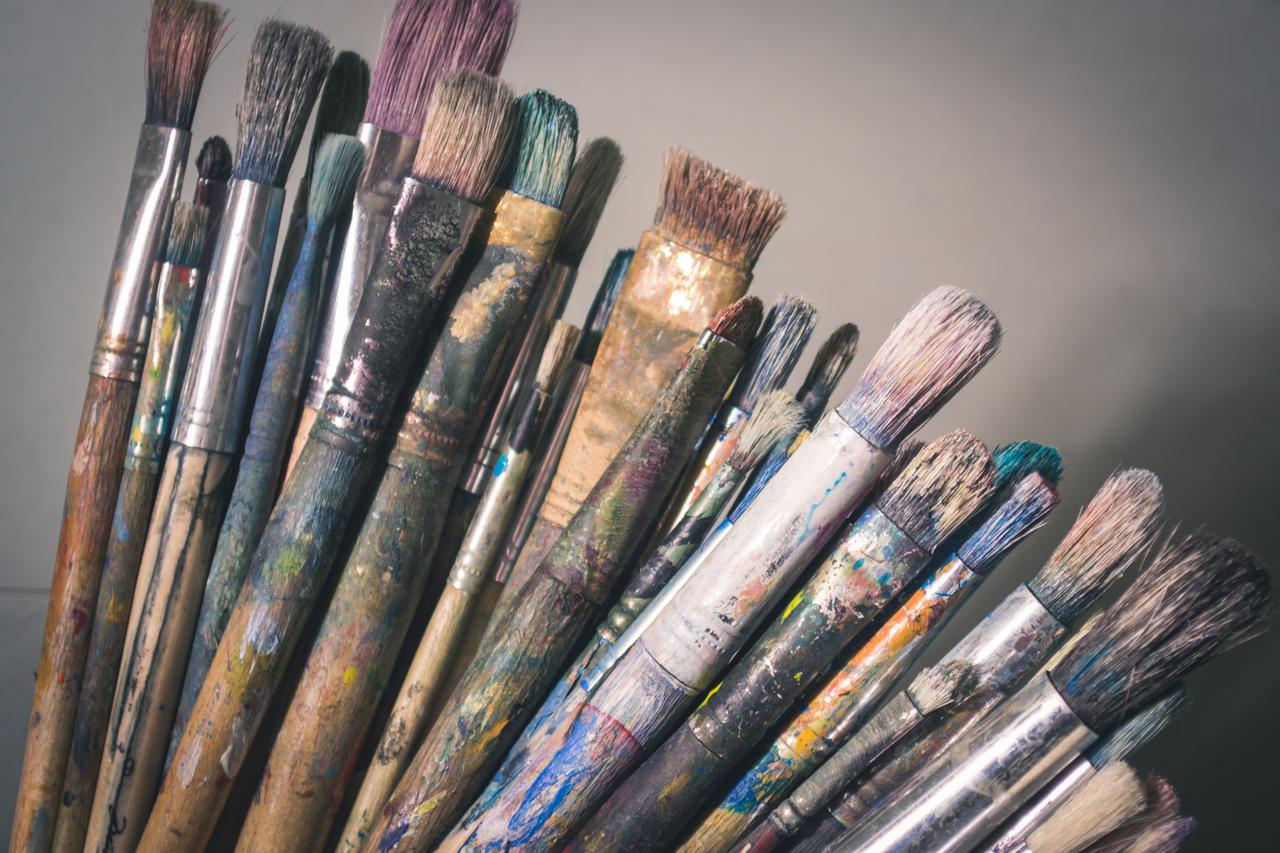Questions to ask before starting your next painting project

Painting is an excellent form of creative expression, but there’s more to it than putting brush to paper. There are a few things you need to consider before beginning your project, such as the type of paint you’ll be using, the brushes you’ll need, and more.
Whether creating custom paintings for my clients or just experimenting in the studio, I start every project by asking myself these questions:
What type of paint should I use?
The type of paint you use can greatly affect the overall aesthetic of your paintings. Some types of paint are also much easier for beginners to use than others.
Acrylic paint is very forgiving, making it a perfect option if you’re still learning. It dries very fast, and because it's opaque, it allows you to create very precise borders between colors. With acrylic paint, what you see is what you get: the true color will appear as-is even when applied over dark colors, as long as the first layer is dry.
Watercolor paint can be more challenging for beginners, because you cannot cover up your mistakes like you can with acrylic. It also requires blending skills. That said, watercolor is a much less precise medium, giving you the freedom to experiment while learning.
What will I be painting on?
If you’re working with acrylic paint, I suggest using canvas. One thing to keep in mind is that acrylics may look dull on unprimed canvas. If your canvas is not primed, you can add a couple coats of Gesso. You can also buy pre-stretched, pre-primed canvas at most art stores.
Canvas is usually not absorbent enough to work well with watercolor paint. Instead, you can buy paper that is specifically made for watercolors. It comes in a variety of different grades and textures. If you’re still a beginner, it’s best to use student grade watercolor paper.
Do I have the right brushes?
There are many different paint brushes to choose from depending on your needs. If your paintings will include precise lines and fine details, be sure to grab a pointed round brush.
Flat or rectangular brushes are ideal for filling in large areas of color. If you want to create textural effects, such as foliage, use a fan brush.

Have I tested out my colors yet?
It’s best to test out your colors on a sketchpad or a practice canvas first. Be sure to observe how the paint behaves, and see how it blends with other colors. This is also a good opportunity to start pre-mixing any custom blends you want to create.
Have I mapped out a drawing?
Before you commit to your painting on canvas, consider mapping it out beforehand. Most artists use this technique to help them create well-structured paintings. You can begin by drawing your ideas on a sketchpad.
Once you have a more defined vision of what you want to achieve, create a preliminary drawing directly on your canvas. You don’t have to focus on the fine details at this point; just sketch the general architecture.
The goal is to create a roadmap for your painting. After a few minutes of sketching, go ahead and start adding paint to bring your vision to life.
Custom paintings by Matt Kaplinsky
Are you seeking inspiration for your paintings or looking to purchase unique art for your home? Browse my gallery to find one-of-kind paintings based on landscapes and still lifes.
I’m also available to create custom paintings based on your tastes. Contact me today to learn more about my commissioned art services.